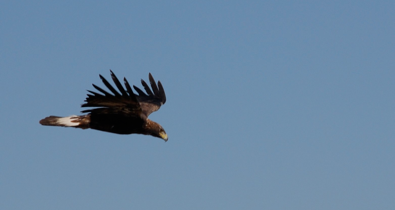
Never take council of your fears.
Point number 18, memo from George Patton to his staff, June 1943

Never take council of your fears.
Point number 18, memo from George Patton to his staff, June 1943
A Start
20 November 2008
About a year ago, I realized it was time for new challenges. I’m a professor in geology and I study the effects of climate and sea-level change on ancient marine ecosystems (but that’s a different story). As part of my research, I’ve written programs for scientific analyses and have distributed some of them on my university website. I’ve programmed for over twenty years, writing some BASIC, FORTRAN, Hypercard, and then I switched to C about 15 years ago. The software I released was written for Mac OS 7-9, and I made the switch to Carbon once it came out. Although I made a couple of half-hearted attempts at learning Cocoa, it seemed that the demands on my time never allowed me to really take it on. I’d read about Aaron Hillegass’ highly regarded Cocoa Bootcamp, but finances always seemed a barrier.
About a year ago, it hit me. I wanted to take the course and I wanted to use it to springboard my programming. I wanted to make real software for scientists, not just some partially baked one-task tools. And I wanted to give a go at selling the software, making a company, the whole shebang.
It still seemed like a pipedream and then a good friend of mine suggested a way to cover the cost of Aaron’s Cocoa Bootcamp. It worked. I took the course in Atlanta in April this year and it was everything I’d hoped for. Aaron’s advice the last day was to dive in, start writing code. It didn’t happen. I was off to Nanjing to teach for a week. Then I was writing manuscripts, and soon a couple of months had elapsed. By chance, I ran into a friend who had mentioned how easy it was to use WebKit. I’d been thinking about writing a tool for converting latitude and longitude into a URL for Google maps, but his comment made me realize that instead of pasting that URL into a browser, I could do it all within one application. By the weekend, Locator was born and I found my motivation. Soon, I’d updated the interface for Analytic Rarefaction, the most popular program I’d offered on my university web site. I’d updated Margin of Error as well, and even realized how easy it would be to make a Binary Clock Screen Saver that I’d been toying with.
I had at least some shareware to distribute, and Hunt Mountain Software was born. I dove into Diversity, a program that’s the evolutionary next step from Analytic Rarefaction. It does individual-based rarefaction and sample-based rarefaction (and plots them), it calculates diversity metrics, and it also turns out to be an incredibly fast way to enter ecological data. And it has some very useful import and export functions built in. I’m testing it now and getting ready to send it out for testing soon. It will be my first commercial application and I’m now learning as much as I can about the business side of being a developer.